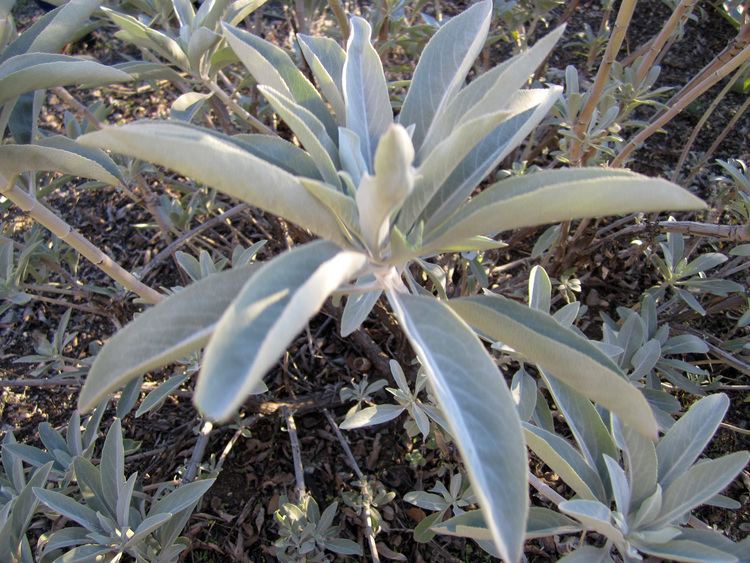Rank Species | Genus Salvia Higher classification Sage | |
 | ||
Similar Sage, Palo Santo, Salvia mellifera, Salvia clevelandii, Common sage | ||
Garden pepperazzi wild white sage harvest salvia apiana
Salvia apiana (white sage, bee sage, or sacred sage) is an evergreen perennial shrub that is native to the southwestern United States and northwestern Mexico, found mainly in the coastal sage scrub habitat of Southern California and Baja California, on the western edges of the Mojave and Sonoran deserts.
Contents
- Garden pepperazzi wild white sage harvest salvia apiana
- Description
- Native American names
- Distribution and habitat
- Uses
- Cultivation
- Ecology
- Antibacterial properties
- References

Description

S. apiana is a shrub that reaches 1.3 to 1.5 metres (4.3 to 4.9 ft) tall and 1.3 metres (4.3 ft) wide. The whitish evergreen leaves have oils and resins that release a strong aroma when rubbed. The flowers are very attractive to bees, which is described by the specific epithet, apiana. Several 1 to 1.3 metres (3.3 to 4.3 ft) flower stalks, sometimes pinkish colored, grow above the foliage in the spring. Flowers are white to pale lavender.
Native American names

Names for white sage in local Native American languages include qaashil (Luiseño), shlhtaay or pilhtaay (Kumeyaay), kasiile (Tongva), we'wey (Chumash), qas'ily (Cahuilla), shaltai (Paipai), and lhtaay (Cochimí).
Distribution and habitat

White sage is a common plant that requires well-drained dry soil, full sun, and little water. The plant occurs on dry slopes in coastal sage scrub, chaparral, and yellow-pine forests of Southern California to Baja California at less than 1,500 metres (4,900 ft) elevation.
Uses
S. apiana is widely used by Native American groups on the Pacific coast of the United States. The seed was a main ingredient of pinole, a staple food. The Cahuilla harvested large quantities of the seed that was mixed with wheat flour and sugar for gruel or biscuits. The leaves and stems were eaten by the Chumash and other tribes. Several tribes used the seed for removing foreign objects from the eye, similar to the way that Clary sage seeds were used in Europe. A tea from the roots was used by the Cahuilla women for healing and strength after childbirth. The leaves are also burnt by many native American tribes, with the smoke used in different purification rituals.
Cultivation
S. apiana prefers a sunny location, well draining soil, and good air circulation. It easily hybridizes with other Salvia species, particularly Salvia leucophylla and Salvia clevelandii.
Ecology
Bumblebees, hawk moths, and wasps pollinate white sage, and hummingbirds also appear to like the plant.
Antibacterial properties
A study performed at the University of Arizona in 1991 demonstrated that Salvia apiana has potential antibacterial properties against Staphylococcus aureus, Bacillus subtilis, Klebsiella pneumoniae, and Candida brassicae.
